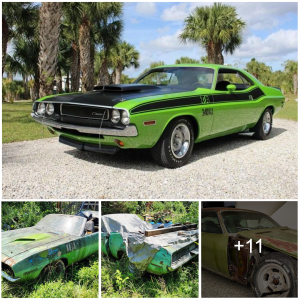:max_bytes(150000):strip_icc():format(webp)/GettyImages-1223442946-36e91ae844cf4262a1fc138af51401fa.jpg)
Hanging indoor plants are a great addition to your house because, in addition to looking absolutely stunning, they don’t take up valuable floor space and most require very little care. Having them off the floor also means that they are out of the reach of kids and pets, and you can take advantage of natural light near windows. Also, systems for hanging indoor plants continue to expand—from boho macrame to sleek, modern hangers and minimalist setups that make the plants look like they are hanging in space.
The 15 plants in this list will do beautifully in a hanging setup, and most of them are pretty easy to take care of, too.
Spider Plant (Chlorophytum comosum)
Treehugger / Sanja Kostic
Spider plants are popular because they are easy to grow and tolerate a variety of conditions. They do need some natural light and regular watering, but they tolerate tight pots. And if they’re not getting enough water, they’ll let you know by showing brown ends in their long and dangly leaves.
Not only do the leaves look good tumbling from your hanging pot, but spider plants create cute baby “spiderettes” which hang off the sides in bunches; these can be left or clipped and used to make a new plant.
Plant Care Tips
- Light: Bright, indirect light (not too much direct sun).
- Water: Regular watering, but let dry between waterings.
- Soil: Regular houseplant potting soil.
- Pet Safety: Nontoxic to cats and dogs.1
Boston Fern (Nephrolepis exaltata bostoniensis)
:max_bytes(150000):strip_icc():format(webp)/BostonFern-8d3504eee7f34179bb874a7519af3ef9.jpg)
Treehugger / Lindsey Reynolds
The Boston fern, like all ferns, likes to be kept relatively damp, so it should be planted in a loamy mix that will hold water, and regular misting is also recommended. Originally found in the tropics, these ferns don’t like to be too cold and do well in warmer spaces as long as they don’t dry out.
Even though they like to be damp, always make sure extra water can drain from the bottom, as they don’t want to sit in water either. Boston ferns need to be rotated regularly so the whole plant gets enough light (which is easy to do with a hanging plant).
Plant Care Tips
- Light: Bright and indirect; sun shouldn’t shine directly on leaves for long periods.
- Water: Frequently; keep the soil moist but ensure drainage.
- Soil: Needs a rich, loamy mix (no sand or pebble mixes).
- Pet Safety: Nontoxic to cats and dogs.2
Burro’s Tail (Sedum morganianum)
:max_bytes(150000):strip_icc():format(webp)/GettyImages-1017027648-12809ecfa2fe4ff5954cfe2ab535fed5.jpg)
Iryna Imago / Getty Images
Burro’s Tail is a type of succulent, so it needs less water than some of the other moisture-loving plants on this list. It is also perfectly happy in a very sunny or hot location; in fact, if it doesn’t get enough light, it will get stringy-looking. Native to southern Mexico and Honduras, its leaves are a lovely green or green-blue with a sometimes chalky appearance (that’s normal).
Burro’s tail can grow quite long—up to 2 feet over the edge of your hanging pot. Because it stores water in its leaves as it grows, it can get quite heavy, so make sure that the hook it hangs from is sturdy.
Plant Care Tips
- Light: Bright.
- Water: Water regularly, but allow to fully dry out between waterings.
- Soil: Dry, sandy soil that drains well.
- Pet Safety: Nontoxic to cats and dogs. 3
Christmas Cactus (Schlumbergera bridgesii)
:max_bytes(150000):strip_icc():format(webp)/GettyImages-511790642-69a68ac86d514a0fa2e250efb331b2e3.jpg)
Nadezhda Nesterova / Getty Images
Despite their name, some varieties of Christmas cactus actually bloom around Halloween, others around Thanksgiving, and a few around Christmas. Their salmon pink, white, fuchsia, or red blooms can last several weeks to a month during blooming season. You will notice that some have lighter or smaller leaves, and some have bigger, thicker or darker leaves, but all varieties of this plant are easy to care for.
Even though it’s called a cactus, this plant is native to the Brazilian rainforest and definitely needs to be watered regularly, as opposed to a desert cactus. They can tolerate quite a tight pot and can live 20-30 years with fairly minimal assistance.
Plant Care Tips
- Light: Bright, indirect light to mostly shade.
- Water: Water well, but allow to dry out between waterings.
- Soil: Lightweight potting soil that’s well-draining.
- Pet Safety: Nontoxic to cats and dogs.4
English Ivy Plants (Hedera helix)
:max_bytes(150000):strip_icc():format(webp)/GettyImages-1284033921-bddcee0dc683479a8b0bfc2176506a83.jpg)
matth be / Getty Images
English ivy grows quickly and easily in a variety of conditions. It also likes to trail (or climb) all sorts of structures, so you could drape its tendrils over a curtain rail, or even attach them to the ceiling. English ivy doesn’t need a lot of light and can do well even in shady locations with patchy sun. It doesn’t like hot conditions though, so don’t place it near a heater, and it likes to be kept moist.
Plant Care Tips
- Light: Indirect light to mostly shade.
- Water: Keep soil moist but ensure drainage. Spritz with a mister.
- Soil: Regular potting mix.
- Pet Safety: Toxic to cats and dogs.5
Moon Orchid (Phalaenopsis orchid)
:max_bytes(150000):strip_icc():format(webp)/GettyImages-1203224181-2a89a3a60ffe4c80b7d41d9d886beb67.jpg)
MaximFesenko / Getty Images
Most orchids like shadier conditions and are easier to grow than you might think. Moon orchids — these are the kind you’ll commonly find in supermarkets — work well as hanging plants because their thick and shiny leaves like to droop over the edges of their pots. When they bloom, they continuously do so for three or more months, but the rest of the time, their slow-growing leaves are a pleasing compliment to your holder.
Orchids like humid conditions, including regular spritzes with a mister. They like to be watered regularly, but many people make the mistake of overwatering them. Be sure they can drain, as orchids’ tightly packed roots will rot if they sit in water.
Plant Care Tips
- Light: Mostly shady with a couple of hours of indirect light per day.
- Water: Regularly, but don’t let them sit in water.
- Soil: Sphagnum moss and bark (look for an orchid mix); these do not do well in regular potting soil.
- Pet Safety: Nontoxic cats and dogs.6
Heartleaf Philodendron (Philodendron hederaceum)
:max_bytes(150000):strip_icc():format(webp)/philodendron-hederaceum-scandens-brasil-tropical-house-plant-with-yellow-stripes-on-shelf-stock-photo-1286260775-eb29eb6878574fb8b7a228957ec4f5f3.jpg)
With glossy green, heart-shaped leaves attached to vines that tumble from a hanging pot or wend their way along the top of a shelf or bookcase, the heartleaf philodendron grows easily without too much care. Native to South America, it’s tolerant of drier conditions, but it will thrive if misted occasionally to clean leaves.
Plant Care Tips
- Light: Bright indirect light, but not direct sunlight.
- Water: Water well, but allow to dry out between waterings.
- Soil: Peat-moss mix.
- Pet Safety: Toxic to cats and dogs.7
Goldfish Plant (Nematanthus gregarius)
:max_bytes(150000):strip_icc():format(webp)/GettyImages-1275655232-cd71ed4855014c04942b7a7798933cee.jpg)
weissch / Getty Images
This pretty plant has small, glossy leaves and bright yellow or orange flowers that look as if they are leaping out of the green foliage, hence its name. They are drought-tolerant, and need plenty of sunlight to thrive, but they can grow long, woody stems over time that can gracefully flow over the edges of your hanging pot.
Plant Care Tips
- Light: Bright, indirect light.
- Water: Generous water in the summer, drier in the winter.
- Soil: Light soil, like a sphagnum moss or a moss and perlite mix.
- Pet Safety: Nontoxic to cats and dogs.8
Pilea Aquamarine (Pilea glauca)
:max_bytes(150000):strip_icc():format(webp)/GettyImages-1244981486-fedfb30a7a3a4c709b87935b5be20e73.jpg)
Struzhkova Ilona / Getty Images
With tiny blue-green leaves held aloft or trailing on bright reddish stems, pilea aquamarine is a modern favorite. It’s another houseplant that originated in tropical areas, so it does best in not-too-hot and not-too-cold temperatures typical to what most people have at home. This one is sometimes called “artillery plant”, because when watered, its tiny, otherwise non-noticeable flowers open up and throw out pollen in a burst.
Plant Care Tips
- Light: Bright, indirect light, but no direct sun.
- Water: Water well in spring and summer, but let the top of the soil dry out in the winter.
- Soil: A mix of sand and peat or lightweight soil
- Pet Safety: Nontoxic to cats and dogs.9
Spiderwort (Tradescantia zebrina)
:max_bytes(150000):strip_icc():format(webp)/GettyImages-1142624711-0fe6a5de47d747fca4230894c27879b5.jpg)
dropstock / Getty Images
Spiderwort comes in green and purple-leaved varieties, both with pretty variegation. Native to Mexico and Central America, it grows quickly and easily, with cascading vines and small white or pink flowers that seem to pop up randomly. It likes moist soil but don’t overwater—this one will get root-rot pretty quickly if you leave it too wet. Spiderworts only last a few years before getting leggy, but new plants are easily propagated from leaves and stems.
Plant Care Tips
- Light: Bright, indirect light and plenty of it.
- Water: Water frequently but not heavily, and don’t let the plant sit in moist soil too long.
- Soil: Lightweight potting soil that’s well-draining
- Pet Safety: Toxic to cats and dogs.10
Baby’s Tears (Soleirolia soleirolii)
:max_bytes(150000):strip_icc():format(webp)/GettyImages-118105540-fed67ebc569346a58d546f45671be351.jpg)
brytta / Getty Images
Normally, this tiny leaved plant grows horizontally as a ground cover, but it can also look great in a hanging situation, dropping down gently from the edges of a pot. These are fairly easy to grow, but do require attention. Baby’s tears get brown leaves if left too long in direct sunlight, and they actually grow well under a fluorescent light if you are short on bright windows. This plant likes a lot of moisture, so it’s ideal for a bathroom, and otherwise should be kept moist at its roots and spritzed regularly.
Plant Care Tips
- Light: Bright, indirect light.
- Water: Water well, but allow to dry out between waterings.
- Soil: Lightweight potting soil that’s well-draining.
- Pet Safety: Nontoxic to cats and dogs.11
Peppermint (Mentha piperita)
:max_bytes(150000):strip_icc():format(webp)/peppermint-c1127b340c1b4df8b49431a95f58684b.jpg)
Treehugger / Lindsey Reynolds
No, peppermint doesn’t drape or tumble down the edge of a hanging planter like others on this list, but a hanging mint plant can be a great option for a sunny kitchen window, where you’ll be able to pinch off leaves to use in any a dish (or just straight to freshen breath).
The only caveat for mint is that you will need to grow it in a deeper hanging pot — 10 inches or so, though it’s ideal for those designer pots that are long and narrow. Plenty of sun, and plenty of moisture and you’ll have mint whenever you want to pep up a salad, or add a bite to your cocktail. Mint doesn’t last long, but you can easily propagate it.
Plant Care Tips
- Light: Bright light to direct sun.
- Water: Keep moist
- Soil: Regular potting soil
- Pet Safety: Toxic to cats and dogs.12
Golden Pothos (Epipremnum aureum)
:max_bytes(150000):strip_icc():format(webp)/GettyImages-1283014018-b1db1716137a486eb605071374d7b061.jpg)
Brendan Maher / Getty Images
You’ve probably seen this plant hanging more places than any other on this list, from mall planters to big-box stores. That’s because it’s very, very easy to keep alive; some even put it on the “unkillable plants” list, but of course any plant can and will die. It comes in a variety of leaf colorations and variegations and likes lots of sun, but can also do well under lower light conditions or fluorescent lights. And it has graceful, trailing vines.
Plant Care Tips
- Light: Bright, indirect light to mostly shade.
- Water: Water well, but allow to dry out between waterings.
- Soil: Regular potting soil.
- Pet Safety: Toxic to cats and dogs.13
String of Hearts (Ceropegia woodii)
:max_bytes(150000):strip_icc():format(webp)/string-of-hearts-in-an-orange-hanging-basket-1184263358-1d3377a53dbf4547b875a636925fc030.jpg)
String of hearts is so named for its small, heart-shaped leaves, and it also has lovely lantern-shaped, lavender flowers. Originally from southern Africa, this plant is part of the succulent family.
Plant Care Tips
- Light: Bright, indirect light.
- Water: Tolerant of dry periods, but needs more water than other succulents.
- Soil: Lightweight soil with sand or perlite for good drainage.
- Pet Safety: Nontoxic to cats and dogs.14
Aloe Vera (Aloe barbadensis)
:max_bytes(150000):strip_icc():format(webp)/aloe-vera-on-a-wooden-table-1081880490-0128d917d4fa4beba7dc24e6bc0c3047.jpg)
If you’re looking for a plant that will tumble down your hanging pot, this isn’t it, but it could be ideal for a sunny bathroom, where it would be conveniently placed to be used in skin care. Aloe vera is really easy to care for; you won’t need to water it much and it can grow in fairly shallow pots that you can hang.
Plant Care Tips
- Light: Bright, indirect light to full sun.
- Water: Water regularly, but allow to dry out between waterings.
- Soil: Sand and potting soil mix that’s well-draining.
- Pet Safety: Toxic to cats and dogs.15





